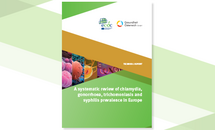A systematic review of chlamydia, gonorrhoea, trichomoniasis, and syphilis prevalence in Europe
This systematic review aimed to identify and collate prevalence estimates for the European general population and populations of special interest for the four curable STIs: chlamydia (etiological agent Chlamydia trachomatis), gonorrhoea (etiological agent Neisseria gonorrhoeae ), trichomoniasis (etiological agent Trichomonas vaginalis ), and syphilis (etiological agent Treponema pallidum subspecies pallidum ).
Background
Sexually transmissible infections (STIs) represent some of the most prevalent infections globally, with an estimated 375 million new infections with one of the curable STIs each year. About 300 000 new diagnoses of bacterial STIs are reported annually by the European Union (EU)/European Economic Area (EEA) Member States to The European Surveillance System, the main source of epidemiological data for the region. Variations in STI surveillance system characteristics and coverage, together with differences in screening policies and testing practices, hinder the routine surveillance data from providing an accurate picture of STI epidemiology. To better describe the STI epidemiology, to adequately inform primary or secondary prevention efforts, and to provide data for monitoring progress towards the elimination of STIs as a public health threat in Europe requires supplementary epidemiological information, such as prevalence estimates.
Download








